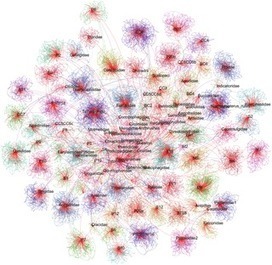PLOS Computational Biology: Analyzing and Synthesizing Phylogenies Using Tree Alignment Graphs
See on Scoop.it – Virology and Bioinformatics from Virology.ca
Phylogenetic trees are used to analyze and visualize evolution. However, trees can be imperfect datatypes when summarizing multiple trees. This is especially problematic when accommodating for biological phenomena such as horizontal gene transfer, incomplete lineage sorting, and hybridization, as well as topological conflict between datasets. Additionally, researchers may want to combine information from sets of trees that have partially overlapping taxon sets. To address the problem of analyzing sets of trees with conflicting relationships and partially overlapping taxon sets, we introduce methods for aligning, synthesizing and analyzing rooted phylogenetic trees within a graph, called a tree alignment graph (TAG). The TAG can be queried and analyzed to explore uncertainty and conflict. It can also be synthesized to construct trees, presenting an alternative to supertrees approaches. We demonstrate these methods with two empirical datasets. In order to explore uncertainty, we constructed a TAG of the bootstrap trees from the Angiosperm Tree of Life project. Analysis of the resulting graph demonstrates that areas of the dataset that are unresolved in majority-rule consensus tree analyses can be understood in more detail within the context of a graph structure, using measures incorporating node degree and adjacency support. As an exercise in synthesis (i.e., summarization of a TAG constructed from the alignment trees), we also construct a TAG consisting of the taxonomy and source trees from a recent comprehensive bird study. We synthesized this graph into a tree that can be reconstructed in a repeatable fashion and where the underlying source information can be updated. The methods presented here are tractable for large scale analyses and serve as a basis for an alternative to consensus tree and supertree methods. Furthermore, the exploration of these graphs can expose structures and patterns within the dataset that are otherwise difficult to observe.
See on www.ploscompbiol.org
